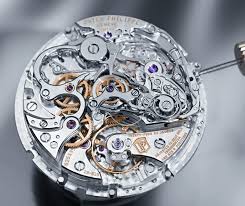Watch Movements (Part 1)
Are you wearing a watch right now? There is a pretty good chance that you are. And you will also know if the watch you wear on a regular basis is an analog watch or a digital watch. It might even be a brand new smart watch! But when it comes to more traditional, analog watches, there is an entire science behind how it ticks, and how it moves. This is called watch movement, or caliber.
The caliber is not the case that protects the inner workings of the watch, but is actually the mechanism that gives the watch its movement. With that in mind, there are three types of watch movements, which are categorized as manual movement, automatic movement, and quartz movement.
Manual Movement:
Sometimes known as “hand wound movement,” manual movement is the oldest and very first type of watch or clock movement. Dating all the way back to the 16th century, this type of movement needs daily attention, as it needs to be wound once a day, every day. Because of this reason, watches that require manual winding aren’t worn by most people, and are usually very expensive collectors’ items.
If you do own a manual movement watch, it is important that the watch not be wound too tightly, as it would result in an inconsistent manner of telling time. Also, winding the watch too tight can also result in the movement breaking, which would be a costly fix.
Owners of manual moving watches should also remove the watch from their wrists before winding it up for use. Neglecting to do so can result in the entire watch, not just the movement, from being damaged.
There are many parts to a manual movement watch, including the mainspring which is the power source of the actual movement, the great train which transmits stored energy, jewels, balance wheel, dial train, and escapement.



